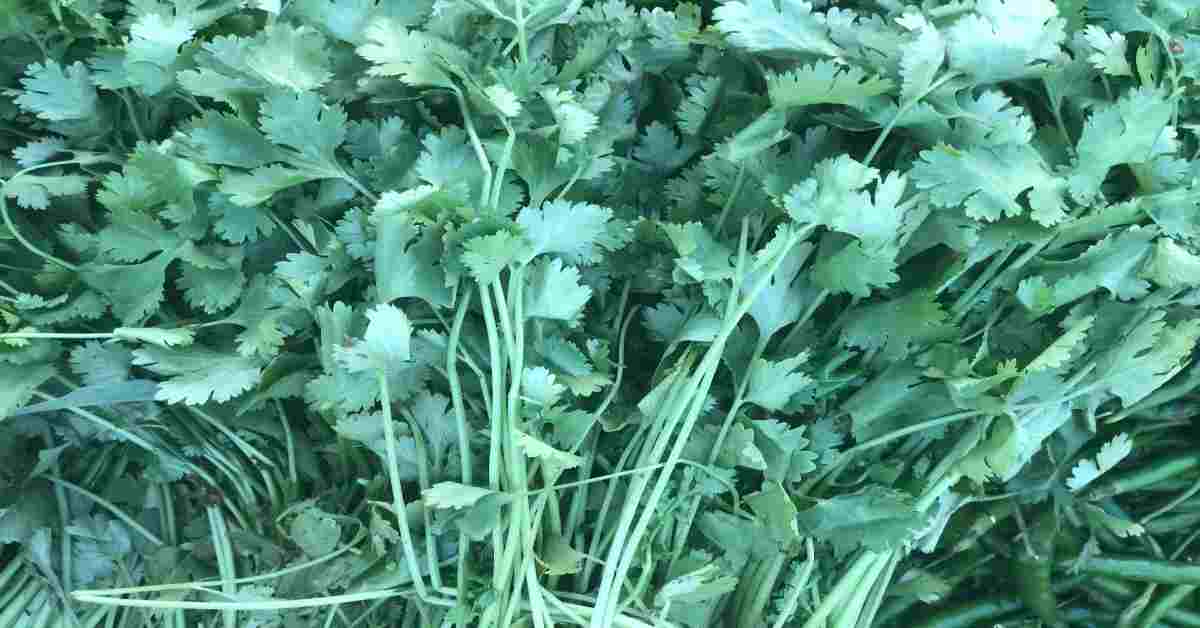One of the first spices utilized by humans was coriander. C. sativum. The benefits of coriander Seeds include cure pain, and rheumatoid arthritis, while coriander decoction heals mouth ulcers and eye redness. The use of coriander seeds to treat gastrointestinal issues such as flatulence, diarrhea, indigestion, and nausea.
About Coriander
Coriander, also known as Coriandrum sativum (C. sativum), is one of the most widely used spices in cuisine around the world. The therapeutic benefits of coriander are already studied. Coriander is responsible for a variety of biological actions, including anti-inflammatory, anti-cancer, neuroprotective, anxiolytic, anticonvulsant, analgesic, and migraine-relieving.
Linalool, the main component widely present in seeds, is particularly involved in the etiology of illnesses. In addition to its regulating effects, C. sativum’s strong antioxidant capacity offers a crucial mechanism for its preventive actions against cancer.
History that shows the benefits of Coriander
Each component of the plant, including the roots, leaves, fruits, and seeds, contains a unique chemical composition, which explains its wide range of applications. It was traditionally consumed in many different regions because every component of the plant has unique nutritional and therapeutic properties. Notably, coriander was traditionally utilized in India to treat respiratory, urinary, and gastrointestinal discomfort. Additionally, the whole coriander plant is also used in some parts of Pakistan for folk medicine to treat flatulence, dysentery, diarrhea, and vomiting.
Coriander, on the other hand, is frequently used in the culinary industry as a seasoning and preservative agent for food because of its distinctive flavor and aroma; it’s possible to use it whole or in ground form. Furthermore, the powdered fruit of C. sativum is being used as a flavoring agent to mask the taste of some foods.
Coriander, also known as Coriandrum sativum, is a herb that has its roots in Italy but is now widely grown around the world, including in China, India, Bangladesh, North Africa, The Netherlands, Russia, Hungary, and Central and Eastern Europe (Morocco, Malta, and Egypt). Although the entire plant is edible, Indian and Pakistani cuisine frequently uses fresh leaves and dried seeds.
Description
- The plant is an annual that grows 30-100 cm tall, is branching, brilliant green, and has erect stems.
- The flowers are short umbels with 5-10 rays in pale mauve or white.
- The seeds are spherical, beaked, finely ribbed, yellow-brown, and 5 mm in diameter, with five longitudinal ridges. They develop three months after planting.
- The gathered plants have an unpleasant scent that fades after drying and becomes fragrant.
- Coriander is two types depending on the diameter of the fruit: 3-5 mm (Coriandrum sativum L. var. vulgare) and 1.5-3 mm (Coriandrum sativum L. var. vulgare) (C. vulgare L. var. microcarpum).
Chemical constituents
- According to recent research, many alkaloids, essential oils, fatty acids, flavonoids, phenolics, reducing sugars, sterols, tannins, and terpenoids are present in C. sativum.
- Folates, ascorbic acid, gallic acid, caffeic acid, ferulic acid, and chlorogenic acid are abundant in the leaves.
- Several phenolics and flavonoids are also present in very high concentrations in the vegetative part of C. sativum, including quercetin-varied glycosides, kaempferol 3-O-rutinoside, ferulic acid glucoside, and p-coumaroylquinic acid.
Health Benefits of coriander
Moreover, coriander has a variety of pharmacological properties, such as antioxidant, anti-diabetic, anti-mutagenic, anti-anthelmintic, sedative-hypnotic, anticonvulsant, diuretic, cholesterol-lowering, antifungal, anti-cancer, anxiolytic, hepatoprotective, and anti-ulcer activity.
- Antioxidant and anti-atherogenic activities: Antioxidants are crucial in the promotion of cardiovascular health. Oxidative stress in the myocardium was already related to an increase in the incidence of atherosclerosis, which raises the risk of coronary artery disease. Coriander has significant antioxidant activity, owing to the activity of coriander polyphenols, vitamins, and sterol components.
- Antimicrobial and antifungal properties: The antibacterial effect of the leaves, seeds, and essential oils of C. sativum is one of the most well-documented biological functions. Coriander seed essential oil had antifungal activity against Candida albicans, while coriander leaf essential oil might inhibit Candida species.
- Hypolipidemia effect: There is evidence that crude Coriander extract has the potential to improve blood lipid profiles. Furthermore, coriander’s hypolipidemic properties may be due to phytochemicals like flavonoids and polyphenols.
- Gastrointestinal property: Oral intake of coriander leaves cure gastritis, vomiting, and nausea. Combining the seeds with Santalum and aniseed can aid in burping. The seeds use as stomach tonics. According to the study, taking coriander seeds with pepper is an effective cure for vomiting after eating meals.
- Neuroprotective effect: Linalool, the main component of essential oil, was responsible for the majority of these benefits. Similarly, inhaling coriander oil is effective in alleviating anxiety and depression-like symptoms in a rat model of Alzheimer’s disease.
Other benefits of coriander
- Oral Health: Aphthous stomatitis, toothache, and gum hemorrhages are all treated with coriander leaves.
- Respiratory system diseases: A gargle made from coriander seeds and rose hydrola seems to have been an effective treatment for laryngitis. In addition, nasal injection of leaf extract is useful for nose bleeding. In his book, he states that the syrup of the leaves is beneficial for cough and asthma relief.
- Anticancer activity: Phenolic chemicals have antiproliferative effects by reducing oxidative stress, and DNA damage and inhibiting aberrant cell development. Linalool is a key component in coriander essential oil which is responsible for anticancer properties.
- Analgesic action: Coriander aerial parts extracts have analgesic properties. Chloroform and ethanol extracts were the most effective. Coriander’s analgesic impact may be due to the presence of different compounds such as polyphenols and linalool.
- Anxiolytic action: In traditional and folk medicine, coriander serves to alleviate sleeplessness, headaches, and anxiety. Coriander flavonoids with high affinity for central benzodiazepine receptors, such as quercetin and isoquercetin, may have anxiolytic properties.
- Promotes immunity: Vitamins C and E, together with Vitamin A, are abundant in coriander leaves. It helps to strengthen immune system.




